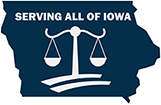- Camanche Personal Injury Attorneys
- Phone: 641-792-3595
- Directions
When accidents and injuries disrupt lives, personal injury lawyers become crucial allies. They specialize in representing those harmed by others' negligence, helping them obtain fair compensation. This article examines the significant role personal injury lawyers play in helping individuals navigate their claims and rebuild their lives.
Proving Liability for a Car in a Right Turn Bicycle Accident
When a car turning right strikes a bicyclist, it's often referred to as a "right hook" accident. These incidents commonly occur when a cyclist is riding on the right shoulder of the road or in the bike lane alongside a car. Proving liability in such cases can be complex, requiring proper evidence of the driver's negligence. This article will explore how right-turn bicycle accidents occur, how to prove liability, the rules of driving around pedestrians, common insurance adjuster tactics, and the importance of legal assistance.
How Right Turn Bicycle Accidents Occur
Right-turn bicycle accidents typically happen under the following circumstances:
1. At Intersections: A car turns right at an intersection, failing to see a bicyclist approaching from the right.
2. Overtaking: A bicyclist overtakes a slower-moving car on the right, placing themselves in the car’s blind spot when it turns right.
3. At Traffic Lights: Both a bike and a car wait at a light; when it turns green, the car turns right, cutting off or hitting the cyclist.
Liability for a Right Turn Bicycle Accident
To prove that the driver was at fault in a right-turn bicycle accident, you must gather several types of evidence. Here are key points to consider:
Police Reports
A police report will detail the accident scene and the events as described by the responding officer. It will also include notes of any citations issued to the driver or the cyclist.
Eyewitness Accounts
Eyewitnesses can provide valuable testimony about what the bike and the car were doing prior to the collision. This can help establish the driver’s negligence.
Driver’s Actions
A driver can be proven negligent if they were:
- Speeding
- Failing to use a turn signal
- Abruptly changing lanes
If witnesses say the bicyclist was:
- Swerving between lanes
- Riding too close to vehicles
- Ignoring traffic control devices
Video or Photo Evidence
Check if anyone captured the accident on video or took photos of the scene. Traffic cameras at intersections or surveillance cameras from nearby businesses may have recorded the incident.
Avoiding Right Turn Bicycle Accidents
To minimize the risk of right-turn bicycle accidents, cyclists should:
- Keep a safe distance behind vehicles.
- Check mirrors for nearby vehicles as they approach intersections.
- Avoid passing cars on the right unless necessary and ensure there is enough space to swerve if needed.
Rules of Driving on the Road When a Pedestrian is Present
According to the National Highway Traffic Safety Administration, about 70,000 pedestrians are injured in motor vehicle accidents each year in the United States. Despite well-established laws for pedestrians and motorists, many accidents occur due to ignorance of these rules.
Iowa Rules of the Road Around Pedestrians
In Iowa, motorists must give the right of way to pedestrians when:
- Entering or leaving a driveway, parking lot, or alley.
- Pedestrians are crossing at an intersection, whether in a marked or unmarked crosswalk, if there are no traffic signals.
Motorists should exercise special precaution when driving through residential areas, near schools, shopping centers, parking lots, and congested areas.
Common Tactics and Defenses Insurance Adjusters Use in Personal Injury Cases
Insurance adjusters often employ tactics to deny, discredit, or delay personal injury claims. Here are some common strategies:
Accessing Medical Records
Adjusters may seek permission to access your entire medical history to find any pre-existing conditions that could undermine your claim.
Offering a Low-Ball Settlement
Adjusters might offer a quick, low settlement to close the case, which often does not cover the full extent of your injuries.
Surveillance
Adjusters may place you under surveillance to catch you performing daily tasks, which can be used to discredit your injury claims.
Discouraging Legal Counsel
Adjusters might persuade you not to hire a lawyer, knowing that legal representation would thwart their tactics.
Protecting Yourself
To protect yourself from these tactics:
- Review your insurance policy thoroughly.
- Refuse to authorize the release of your full medical records.
- Be cautious of surveillance and follow your doctor's advice.
- Do not accept a low settlement offer without consulting a lawyer.
We Are Here To Help
Remember, you are not alone in recovering from your injuries. We have helped thousands of Iowans through their physical, emotional, and financial recoveries. If you have questions about what you are going through, feel free to call our office for your confidential injury conference. We will take the time to listen to you and give you our advice concerning your injury matter at no cost or risk to you.
Free Book at No Cost
If you are not ready to speak with an attorney yet but would like to learn more about Iowa injury cases including tips about how you can avoid making common costly mistakes request a copy of our Iowa Personal Injury book which includes 14 myths about Iowa injury cases and 5 things to know before hiring an attorney.
If you have specific questions about your injury matter feel free to call our office to speak with our Injury team at 641-792-3595 or use our Chat feature by clicking here 24 hours a day/7 days per week. Your information will remain confidential and there is no cost or obligation.

